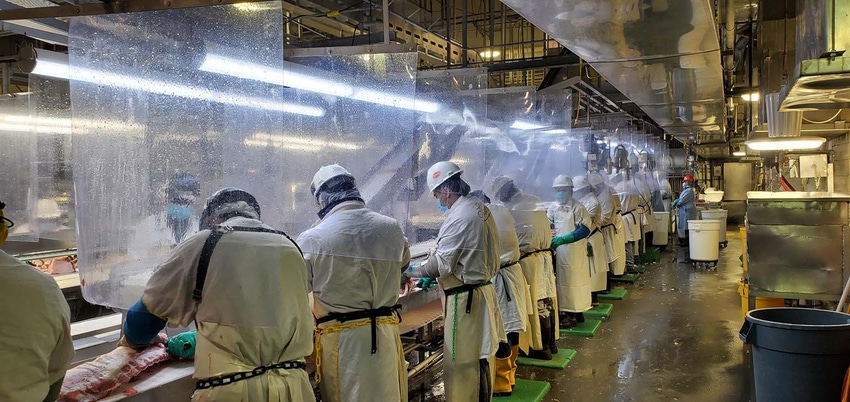A 20-year injury rate reduction from 17.1 to 9.3 to 4.0 illustrates the sustained industry trend of workplace safety improvement.
November 13, 2020

A newly released Bureau of Labor Statistics annual report for 2019 shows U.S. meat and poultry packers and processors continued their lengthy track record of reducing worker injuries, reaching a new all-time low for injuries.
"The BLS report proves that year after year, meat and poultry companies remain committed and have invested billions of dollars to reduce worker injuries and illnesses," says Julie Anna Potts, president and CEO of the North American Meat Institute. "Our members are proud of their record to reduce workplace related injuries over the last 20 years and will continue to adopt new technologies and methods to ensure the safety and well-being of its critical infrastructure workforce."
The BLS report released final 2019 incidence rates for non-fatal occupational injuries and illnesses recorded with the Occupational Safety and Health Administration. Meat industry results improved from both 2018 and 2017 levels, reaching a new, all time industry low of 4.0 cases per 100 full-time workers (per year).
For perspective, just 10 years ago this number was 9.3, while in 1999 the incidence rate was 17.1. A 20-year injury rate reduction from 17.1 to 9.3 to 4.0 illustrates the sustained industry trend of workplace safety improvement.
Meanwhile, in sharp contrast to this data, and in the midst of a global pandemic, anti-animal agriculture and activist groups have falsely accused the meat and poultry industry of ignoring the safety of the men and women who work in their facilities.
"Just as meat and poultry companies have proven their determination to reduce injuries, they are remaining vigilant to reduce the spread of COVID-19," says Potts. "They continue to check temperatures, provide testing, supply additional personal protection equipment such as facemasks and shields, conduct contact tracing, provide enhanced employee benefits like paid leave and much more. Although the industry was challenged in the spring, numbers of positive cases associated with meat packing dropped significantly into the summer."
In the early 1990s, the Meat Institute declared worker safety a non-competitive issue, which encouraged member companies to collaborate to find solutions that prioritized and enhanced worker safety. The meat industry, together with OSHA and the United Food and Commercial Workers union, also developed Voluntary Ergonomic Guidelines for the Meat Packing Industry — guidelines that OSHA called a "model" for other industries. In 2019, labor and human rights, including worker safety, was identified as a key pillar in the Meat Institute's sustainability efforts and the industry is developing additional metrics and targets for continuous improvement over the next decade.
In August, the Meat Institute and OSHA signed a two-year alliance to provide Meat Institute members, the public, and other stakeholders with information, guidance, and access to training resources that will help protect workers. During the two-year alliance, participants will develop information on recognizing coronavirus transmission risks and best practices for preventing transmission, and on challenges for exposure control in meatpacking and processing facilities. Alliance participants will also conduct outreach to small- and medium-sized facilities on available guidance and compliance assistance resources, including the On-Site Consultation Program, and will work together on other outreach activities, including providing information on OSHA's enforcement policies and procedures relevant to the meatpacking and processing industry.
The North American Meat Institute is the leading voice for the meat and poultry industry. The Meat Institute's members process the vast majority of U.S. beef, pork, lamb and poultry, and manufacture the equipment and ingredients needed to produce the safest and highest quality meat and poultry products.
Source: North American Meat Institute, which is solely responsible for the information provided, and wholly owns the information. Informa Business Media and all its subsidiaries are not responsible for any of the content contained in this information asset.
You May Also Like



